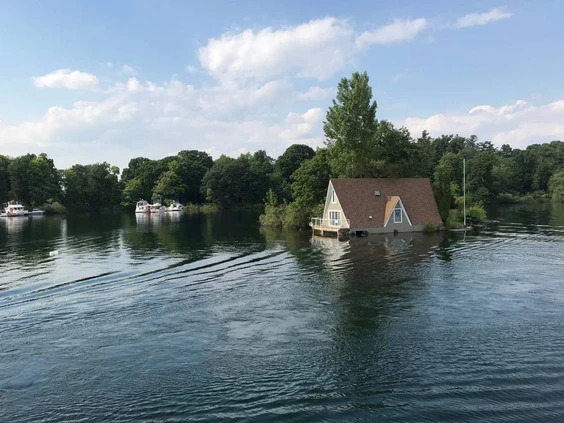
The May 21 storm that hit southern Ontario killed 11 people. Two weeks later, areas in Ottawa were still without power.
“The scale of the damage is so vast that we don’t have any handle on estimates of damage,” said Craig Stewart, who works with the Insurance Bureau of Canada (IBC).
“Unfortunately, we believe we’re going to see more and more of these types of events because as the air above Canada gets warmer, it contains more heat energy, and you can end up with much more powerful storms as a direct result of climate change,” Stewart said.
“The mistake is to see these as one-off events. We’re probably going to be seeing more of them in the years to come.”
So far, at least 6 per cent — and up to 10 per cent — of homes are already uninsurable for flood risk, explained Stewart.
“They cannot be insured for flood because we know they’re going to flood, and insurance is designed for accidents,” he added.
According to Stewart, the risk of flooding will continue to increase without government intervention.
“We expect to have more high-risk homes, as we build more homes in floodplains. And as flooding becomes more severe given climate change.”
Stewart added: “Municipalities across Canada continue to allow development in floodplains, which is crazy… At this point in time, we need to stop developing in floodplains.”
In addition, few Canadians are fully aware that their homes are at risk.
“Governments need to lead the way in identifying homes that are at risk and work with the private industry to help make our consumers aware when they are at risk, and also help in delivering programs that help Canadians flood-proof their homes.”
A 2021 study by insurance comparison site RATESDOTCA showed that the average cost of home insurance rose at more than three times the rate of inflation over the past decade.
The data also revealed that personal property damage claims shot up 42 per cent nationwide over the same period. Ontario home insurance premiums rose by 63 per cent from 2011 to 2021, and Alberta homeowners witnessed a 140 per cent jump in that time.
“Canada is becoming a riskier place to insure and the insurance payouts have quadrupled on an annual basis, more than quadrupled, from $400 million to over $2 billion annually over the last 15 years,” Stewart said.
“So as a result, you can expect that premiums will reflect that increased risk.”
Years ago, the National Round Table on the Environment concluded that the cost of climate change will likely represent $5 billion per year by 2020.
“We’ve exceeded it,” said Stewart.
“The floods in the autumn of 2021 in B.C., those floods alone probably cost somewhere around $8 to $10 billion.”
There is some good news.
Stewart said that the federal government is currently developing an “authoritative flood risk portal” that would give Canadians access to see their “level of risk and what they can do about it.”
The director said it might take two years for the portal to be ready for use.
Stewart offers consumers some tips:
Insurers and experts also believe in retrofitting homes.
“All households are facing more extreme climate events. This will require making homes more resilient,” said Stuart M. Turnbull, a business professor at the University of Houston.
These changes will add pressure to “check the location of homes… a reminder that more bad weather is on its way,” the professor added.
Turnbull gave these specific tips for homeowners to follow:
Stewart says there are also some current programs that can be updated or enhanced to include flood protection. For example, Canada currently offers grants to help homeowners make their homes more energy efficient.
“Those programs can be easily adapted to include flood resiliency. And we have been advocating that they do so,” Stewart said.
As more Canadians become increasingly aware of the risks, maybe they can start advocating — at least on a municipal level — for more up-to-date infrastructure that offers better protection against climate change.